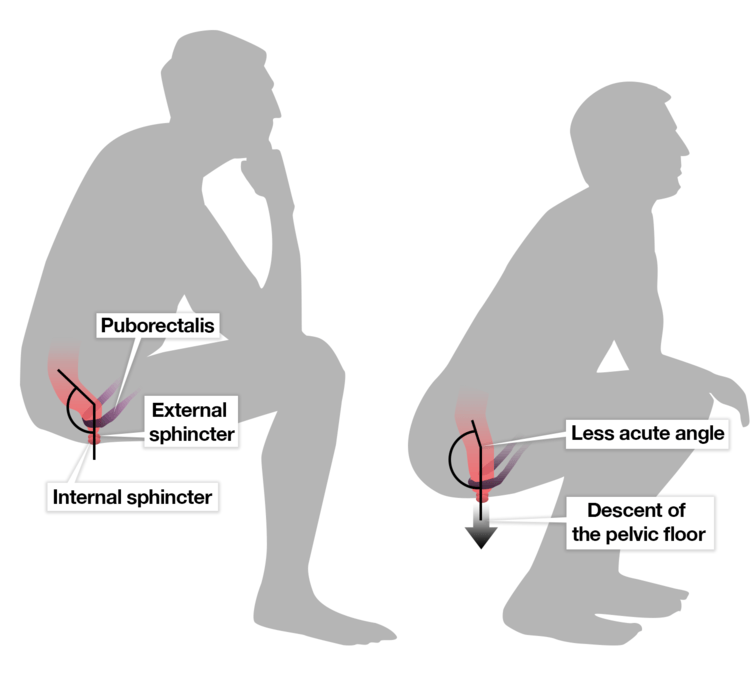Does posture really matter when going to the bathroom?
It is an unfortunate fact that many adults living in Western countries have experienced problems when passing stools and with their gastrointestinal health in general. Among the most common of the digestion-related conditions are hemorrhoids, with around half of the American population suffering from symptoms of this ailment which include soreness and bleeding from the rectum. Constipation is another problem that afflicts many people living in economically well-developed countries. In short, people with access to modern bathroom facilities often appear afflicted with complaints that were not so often seen in the past and are not often widespread in less developed areas of the world. This has led some experts to speculate that the widespread adoption of the modern Western toilet has contributed to the prevalence of digestive disorders in affluent countries.
Is squatting a more natural and healthy position compared with sitting?
Image credit: Vincent Ho/Western Sydney University via The Conversation. CC BY-ND 4.0
The most widely-used argument in favor of squatting rather than sitting to pass bowel movements focuses on the angle of the rectum in each position. When a person sits on a toilet, their rectum is folded over, which means that some straining is usually required in order to successfully pass stools. However, squatting allows this angle to straighten out. This means that gravity can play a useful role in aiding with bowel evacuation. Daniel Lametti, a neuroscientist who wrote an article on the debate for Slate, believes that there is plenty of evidence to suggest that squatting is preferable to sitting on the basis that it may well reduce the risk of developing hemorrhoids. He personally tested the theory for a period of one week and reported that he spent much less time on the toilet each morning in a squatting rather than a seated position.
The diagram above shows why squatting may work to your advantage when passing stools. Seating in the posture modeled by the figure on the left allows the puborectalis muscle to contract around the external sphincter, which means that more straining is required to pass bowel movements. However, squatting as the figure on the right is doing loosens the puborectalis, allowing the descent of the pelvic floor and the easier passing of feces.
How to convert your toilet to facilitate squatting
If you would like to experiment with a change in posture when it comes to using the toilet, there are a few options open to you. If you are flexible and able to hold your balance, you can try a perching squatted position. You may wish to hold onto something sturdy the first couple of times to make sure that you don’t fall off! Alternatively, you could place a chair in front of the toilet and rest your feet on it so that your posture is closer to a squat-like pose.
If you have less faith in your balance and want a convenient solution, you could invest in a specially-designed device to help you adopt a squatting position. The Squatty Potty was designed by the Edwards family from Utah, who wanted an easy-to-use solution that would allow anyone to turn their toilet into an easy place upon which to squat. It requires no complex fitting and is simply placed around the bottom of any standard toilet. The makers have worked with many prototypes to ensure that their product is the “perfect height, shape and design to work with any toilet.”
Why squatting isn’t a cure-all
The extent to which our bathroom posture is linked to various diseases is still open to debate. However, we do know that no change in position will compensate for a poor diet and other unhealthy lifestyle choices. In order to stand the best chance of passing stools comfortably, you need to eat a diet rich in fiber. Include fruits, vegetables, and whole grains on a regular basis. This will ensure that your bowel movements are of the right consistency, which will help reduce the need to strain when you go to the toilet. Another important factor is hydration. Make sure that you drink plenty of fluids, as this also works in reducing the time it takes for stools to pass through the rectum.













































